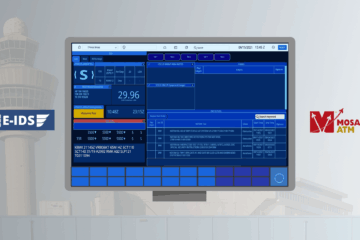Mosaic ATM is proud to announce that we have been selected for a new U.S. Department of Transportation (DoT) Phase I SBIR award to launch the Fatigue Assessment for Transportation Engineer Determination (FATED) project. This initiative builds upon the success of our previous SBIR, Visual Integration of Language Models in Automotive Safety (VILMAS), and represents a significant step forward in leveraging AI for transportation safety, this time in the rail domain.
Fatigue remains a critical safety issue in transportation, especially for locomotive engineers who face long hours, monotonous operating environments, and high cognitive demands. Current fatigue detection tools often rely on self-reporting or intermittent checks, offering limited utility during real-world operations. FATED aims to change this by providing a holistic, real-time fatigue assessment system.
The FATED system will form a key component of a broader Human Factors Fatigue Assessment System (HFFAS), employing lightweight machine learning (ML) models to detect behavioral fatigue indicators in real time. These include:
- Eye movements and eyelid closures
- Facial micro-expressions
- Head posture and body movement
- Reaction time changes
FATED’s core architecture uses a multi-tiered AI approach: base-level computer vision and motion detection models feed into a higher-level meta-model that contextualizes behavioral data to deliver a continuous and objective fatigue score. This system is designed for ease of installation, low hardware overhead, and seamless integration with locomotive monitoring platforms.
The FATED project will be led by Josh Noble, Principal Data Scientist at Mosaic ATM, with technical support from Principal Data Scientist Keith and Senior Program Manager Jim. For the vital human factors research component, Mosaic ATM is once again teaming with Touchstone Evaluations, continuing the strong partnership established during VILMAS.
By extending methodologies developed during VILMAS, FATED minimizes technical risk and accelerates deployment. VILMAS successfully applied CV techniques such as gaze tracking and attention monitoring to detect distracted driving. These same proven algorithms will now be tailored for fatigue detection in railway operators.


